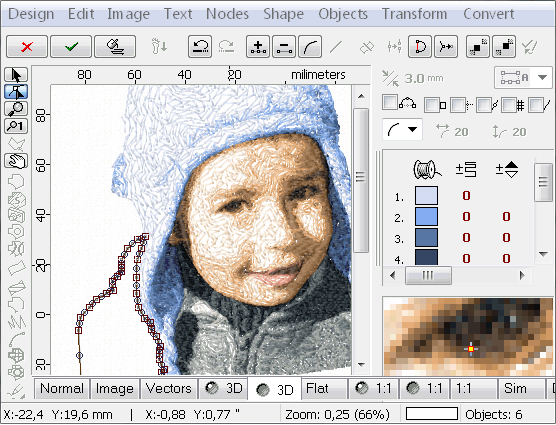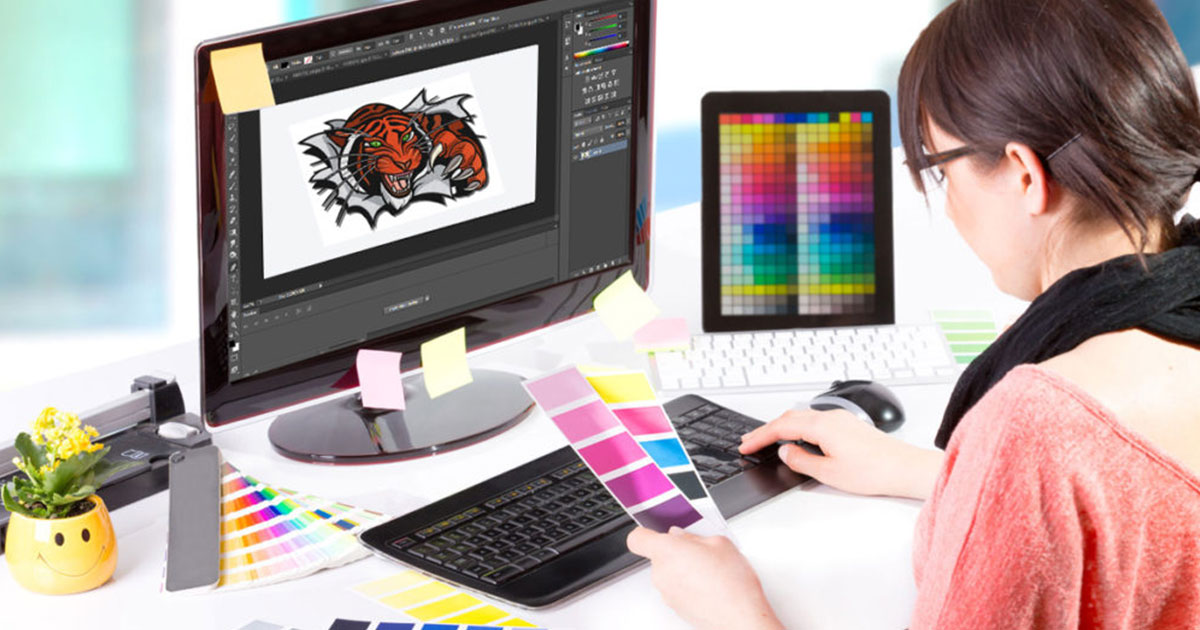Top-Rated Digitizing for Embroidery: Perfect Stitch Every Single Time
Top-Rated Digitizing for Embroidery: Perfect Stitch Every Single Time
Blog Article
Understanding the Embroidery Digitizing Process: Your Ultimate Overview
Embroidery digitizing is a thorough craft that needs accuracy and experience to equate intricate layouts into electronic layouts for device needlework. As artisans start this journey to master the needlework digitizing procedure, a comprehensive understanding of the fundamentals sets the structure for quality. Nevertheless, beyond the fundamental understanding lies a world of sophisticated software application, specialized devices, and nuanced strategies waiting to be explored. By diving into the nuances of digitizing, one can unlock a globe of imaginative opportunities and boost their needlework tasks to brand-new elevations.

Comprehending Needlework Digitizing Essentials
Embroidery digitizing basics develop the foundation upon which complex designs are equated right into machine-readable formats for accurate sewing. This initial step in the embroidery digitizing process is essential for guaranteeing that the last stitched item is a faithful depiction of the original layout. Understanding needlework digitizing basics includes comprehending vital principles such as stitch types, sew direction, thickness, underlay, and draw payment.
Sew types play a crucial role in determining the aesthetic and textural outcome of the stitched layout. By picking the suitable stitch type, whether it be satin, fill, or running stitch, digitizers can attain the wanted impact and boost the general quality of the needlework. In addition, stitch instructions affects the flow and dimension of the style, while thickness identifies the spacing and insurance coverage of the stitches.
Moreover, underlay sewing offers stability to the style by protecting the fabric and avoiding distortion during the needlework procedure. Pull payment is one more necessary consideration to combat the natural tendency of material to contract when sewn. Grasping these needlework digitizing fundamentals is essential for creating professional-quality stitched items.
Selecting the Right Digitizing Software
Choosing the appropriate digitizing software program is an essential decision that substantially affects the effectiveness and quality of the embroidery digitizing procedure. Digitizing for Embroidery. When selecting the appropriate digitizing software application, it is necessary to consider variables such as the complexity of layouts you plan to develop, the user-friendliness of the software, the level of client support used, and the compatibility with your needlework equipment
There are various digitizing software application alternatives offered in the marketplace, varying from standard programs for beginners to innovative software for expert digitizers. Some popular selections consist of Wilcom EmbroideryStudio, Hatch Embroidery Software, and PulseID. These software application bundles offer a wide variety of devices and attributes to help you create intricate layouts with convenience.
Before choosing, it is suggested to explore the different software program alternatives via complimentary tests or trials to establish which one finest matches your needs. In addition, reading reviews and go looking for referrals from knowledgeable digitizers can offer valuable understandings right into the toughness and weak points of each software (Digitizing for Embroidery). By carefully examining your demands and comparing the attributes of different digitizing software program, you can make an educated option that improves your needlework digitizing workflow
Digitizing Tools and Methods

Optimizing Design Setup for Embroidery
Mastering the ins and outs of style settings is essential in accomplishing optimum outcomes in the embroidery digitizing procedure, structure upon the foundation laid by understanding digitizing tools and techniques. When maximizing design setups for needlework, it is important to think about factors such as stitch type, thickness, underlay, draw payment, and registration. Registration settings straighten various aspects of the design properly, keeping total layout honesty.

Troubleshooting Common Digitizing Issues
When running into common digitizing issues throughout the needlework procedure, it is vital to recognize the root causes and execute reliable options immediately. One usual trouble is stitch thickness problems, where stitches might be also dense, causing the fabric to pucker, or also sparse, resulting in gaps in the design. Readjusting the stitch thickness settings in the digitizing software application can assist resolve this issue.
Another frequent difficulty is thread breaks during the embroidery procedure. This can occur because of various factors such as incorrect stress setups, plain needles, or making use of low-grade string. Guaranteeing correct this article maintenance of the embroidery device, including regular needle modifications and stress modifications, can reduce the incident of string breaks.
Moreover, design registration mistakes can lead to misaligned aspects within the embroidery layout. Checking the style positioning in the digitizing software application and making needed changes before sewing can aid in avoiding this issue. By dealing with these common digitizing issues quickly and successfully, you can make sure a smoother needlework process and top quality finished items.
Verdict
In verdict, grasping the embroidery digitizing process requires a solid understanding of the essentials, the best choice of software application, and knowledge of tools and techniques. Maximizing style settings and fixing common digitizing concerns are vital steps in guaranteeing high-quality needlework results. By complying with these actions faithfully, one can achieve accuracy and efficiency in the digitizing procedure.
Report this page